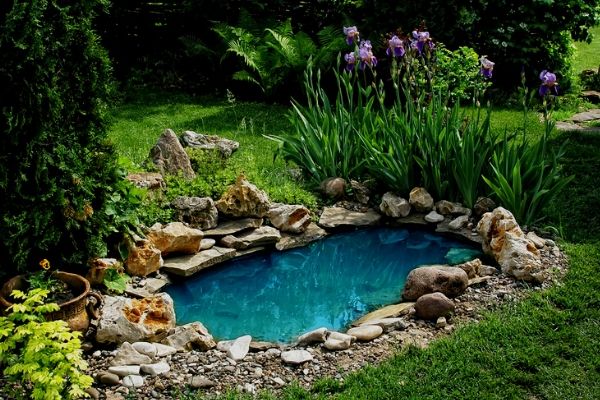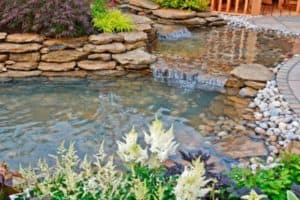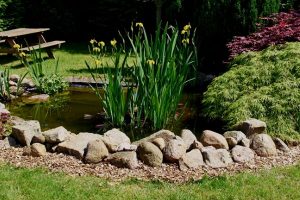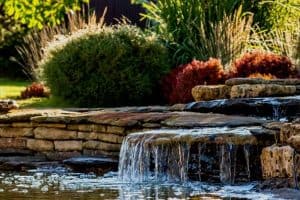If you’re planning to install a new garden pond, one of the first things you need to decide on is how you’re going to line the pond.
Preformed ponds and pond liners are two of the most common pond lining options and they both have their pros and cons, so let’s have a look at each one in depth to see which one is right for your backyard pond.
This post about pond liners vs preformed ponds contains affiliate links. Please read the disclosure for more info.

PREFORMED PONDS
Preformed ponds are a fixed shape and usually made from recycled flexible plastic or polyethylene, which is non-toxic
for fish and pond plants.
Advantages of preformed ponds
Easy to install – The hole you dig for the pond doesn’t have to be exactly the same shape as the preformed pond. Once your hole is deep and wide enough, you can place the pond into position and backfill the hole.
Hardy – Preformed ponds will last for many years and they’re strong enough to withstand tree roots and rocks falling into the pond.
Disadvantages of preformed ponds
Size – Most preformed ponds range in size from about 9 gallons (34 litres) up to 40 gallons (151 litres) so you’re limited to a smaller size pond.
Limited number of shapes available – You can find preformed ponds in rectangle, round
and triangular
shapes but you can’t tailor them to fit the exact shape you want.
Freight – The large size of preformed ponds means that they can be expensive to have delivered, especially if you live in a remote part of the country.
Can’t extend the pond – If you want to make your pond bigger later on you can’t expand a preformed pond. The only option would be to install a second pond and connect them with a waterfall.
Heaving – Many preformed pond owners have had trouble with the pond lifting out of the ground if there isn’t enough water in the pond to weigh it down. This makes it difficult to drain the water out of the pond to clean it.
Heavy rain – Rain water can become trapped between the preformed pond and the soil, (particularly clay soil), which can result in the pond floating out of the hole after heavy rain.
POND LINER
Pond liner is made from synthetic
rubber which is flexible, durable and UV resistant. Most pond liners are thick
enough to withstand damage from rocks falling into the pond, but there are patch kits
available to fix small holes.
Advantages of pond liner
Inexpensive – Pond liners are an affordable way to create a custom designed backyard pond.
Flexibility – Using a pond liner means that you can create the pond in the exact shape you want, including curved edges, different depths and shelves around the edge of the pond.
If you decide to change the shape of your pond down the track, you can drain the pond and move the liner around.
Helps beneficial bacteria – Most pond liners have a textured surface which helps beneficial microbes to thrive in the pond.
Disadvantages of pond liner
Installation – Installing a pond liner takes a bit more time and expertise than a preformed pond.
When digging the hole, the shape needs to be precisely how you want it before installing the liner.
You’ll also need to make sure that the surface is level and there are no sharp rocks sticking up that could puncture the liner. It’s also a good idea to take your shoes off when installing pond liner.
Tree roots – If you’re planning to install a pond close to a large tree, you may have problems with tree roots puncturing the liner. As a precaution you can lay down some old carpet or a thick layer of newspapers underneath the liner for extra protection.
So there are some of the advantages and disadvantages of pond liners and preformed ponds.
I hope this has helped you to decide which option is best for your new garden pond.
RELATED ARTICLES
- Best Location For A Garden Pond
- 7 Pond Edging Ideas
- Winter Pond Maintenance
- 10 Ways To Decorate Your Pond
- Creating A Pond Waterfall
Do you have any questions about options for lining your pond? Let me know in the comments below.
Are you on Pinterest? I have boards dedicated to Backyard Ponds and Water Gardens that you may enjoy.





